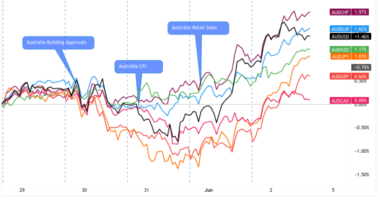Tomorrow at 12:30 pm GMT Uncle Sam will print its consumer price numbers for the month of April.
Will this week’s numbers hint at “peak inflation?” More importantly, how will the markets react?
Here are points you’ll need to consider if you’re planning on trading the event:
What the heck is a CPI report?
The consumer price index (CPI) report reflects the monthly change in the prices of goods and services purchased by consumers. The U.S. also publishes a “core” version, which removes volatile items such as food and energy prices.
Traders look at CPI because stabilizing prices is one of the Fed’s main #CentralBankGoals. That means it can change its policies if there are any significant trends that might affect economic growth.
What happened last time?
- Headline CPI (m/m): 1.2% as expected vs. 0.8% in February
- Core CPI (m/m): 0.3% vs. 0.5% expected, 0.5% in February
- Headline CPI (y/y): 8.5% vs. 8.4% expected, 7.9% in February
- Core CPI (y/y): 6.5% vs. 6.6% expected, 6.4% in February
Headline consumer price index (CPI) jumped from 0.8% to 1.2% in March, which marked the biggest monthly increase since September 2005.
The more closely-watched annual inflation accelerated to a whopping 8.5% rate. That’s the fastest price increase since December 1981!
A closer look showed that higher energy, shelter, and food prices contributed the most to the overall price increases.
The faster-than-expected numbers reminded traders that the Fed can and will raise interest rates aggressively to combat inflation.
The anticipation of higher interest rates and maybe the slowdown of Uncle Sam’s economic recovery dragged the dollar to new intraday lows before settling near its pre-report lows.
What are traders expecting this time?
- Headline CPI (m/m): 0.3% vs. 1.2% previous
- Core CPI (m/m): 0.5% vs. 0.3% previous
- Headline CPI (y/y): 8.2% vs. 8.5% previous
- Core CPI (y/y): 6.2% vs. 6.5% previous
Headline CPI is expected to slow down from 1.2% to 0.3% even as price increases for core consumer goods accelerate from 0.3% to 0.5%.
Meanwhile, annual CPI could ease from a 41-year high of 8.5% to 8.2%. If true, the slowdown would mark the first since August 2021 and the second since the mid-2020s.
Unless we see sharp slowdowns in price increases, this week’s numbers probably won’t affect the Fed’s tightening schedule much.
Governor Powell and his team will likely move forward with their multiple 50 basis-point rate hikes and balance sheet tightening schedule.
Not sure how you can trade the U.S. dollar during the event?
You can check out MarketMilk™ performance ranking of USD pairs for opportunities and take a look at the majors’ average volatility to get clues on your stop loss and profit targets.









